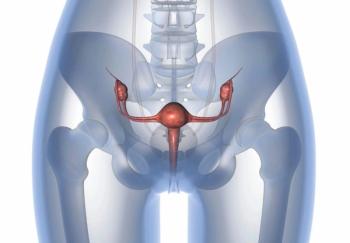
Oncology NEWS International
- Oncology NEWS International Vol 9 No 9
- Volume 9
- Issue 9
Defensive Documentation Reduces Liability
SAN ANTONIO-“Ninety-nine percent of the people you treat are not going to sue you,” Marilyn Frank-Stromborg, EdD, JD, said at the Oncology Nursing Society’s 25th Annual Congress. But for that small percentage of cases where there are going to be problems, you must know how to protect yourself and your institution, she said, and that begins with the practice of “defensive documentation.”
SAN ANTONIONinety-nine percent of the people you treat are not going to sue you, Marilyn Frank-Stromborg, EdD, JD, said at the Oncology Nursing Societys 25th Annual Congress. But for that small percentage of cases where there are going to be problems, you must know how to protect yourself and your institution, she said, and that begins with the practice of defensive documentation.
This type of documentation is akin to the practice of defensive medicine that physicians have been practicing for years by ordering a variety of tests to cover all possible scenarios. Defensive documentation consists of accurate and complete patient charting, said Dr. Frank-Stromborg, chair and professor, School of Nursing, Northern Illinois University, DeKalb.
This includes documentation of the patients history, physical changes, medications, treatments, chemotherapy administration, side effects, any complications encountered, family concerns, and all telephone conversations.
The patient record not only serves as the confidential record of all the care that was provided, but it is a business and a legal document, Dr. Frank-Stromborg said. The patient record is the first piece of evidence that will be looked at when professional negligence is alleged.
When a person commits a negligent act in his or her professional capacity that results in an injury, it is called malpractice, Dr. Frank-Stromborg said.
In any medical malpractice suit brought against a nurse, the patient must prove the following: that the nurse owed a duty of care to that patient, that the nurse breached the duty with conduct that violated the standard of care recognized in the profession, and lastly that the patient suffered damages as a result.
The patient must prove that the breach of duty was the cause of the suffering. We call that the but for, Dr. Frank-Stromborg said. But for what you did, the patient would have been fine.
There are several situations in a medical record that can raise a red flag for the attorney trying the case, Dr. Frank-Stromborg said. Time gaps or improbable events are two of these. Remember, it is your peers reading the medical records. They read your notes, and they know what is probable and improbable, she said.
The omission of key facts, the omission of safety interventions, and limited nursing assessments are also problematic. If you have a seasoned clinician reading your notes, that person knows how many assessments you should be making, Dr. Frank-Stromborg said.
Altered records, unsigned chart entries, and sloppy, incomplete records will also alert the patients attorney to a potential problem. Alteration of records can be very serious, and in some states nurses who do so may have their license revoked.
Risk Reduction Strategies
There are several strategies that can be employed to reduce the chances of a lawsuit, Dr. Frank-Stromborg said. One of the most important of these is to maintain a legible record that can be deciphered by all individuals who need to review the chart.
Records must not be ambiguous, she cautioned. Whether or not good medical care was provided, lawyers can always use an ambiguous chart entry to their advantage. Even if a practice is standard, it must be placed in the record. The presumption in the law is that if it is not documented, it was not done, she said.
Conversations must also be recorded, particularly instructions to the patient and referrals. The failure to correctly document vital information that would be used by other health care providers in rendering treatment can result in a malpractice action.
Information entered into a patients record must be checked. A medical record that is considered complete and thorough may still be considered inaccurate documentation if it contains erroneous information.
And just when you thought you couldnt handle any more responsibility, nurses should also do what is necessary to ensure that other members of the health care team meet their respective responsibilities for charting, Dr. Frank-Stromborg said.
If errors are made, they must be reported. Nurses have an ethical and a professional obligation to report their own errors, she said. As more and more attention is given to the high incidence of medication errors, you may start seeing federal legislation mandating that health care professionals report their mistakes or suffer having criminal charges levied against them.
There are several simple rules to follow to ensure the record is complete and accurate, she said. These include writing in the correct chart, making entries in order of consecutive shifts and dates, and writing the complete date and time of each entry.
Concise, factual, concrete, and specific terminology must be used. However, Dr. Frank-Stromborg said, you want to use the patients words in describing symptoms, so you should get comfortable using quotes.
Acceptable hospital abbreviations may be used, but she advised against use of other types of abbreviations.
Charting should be done in ink, and each entry should be signed with the nurses name and title, with no space between the end of the charting and the name.
There are also several charting behavior habits that must be avoided, Dr. Frank-Stromborg said. These include charting in advance. I have actually seen charts where people wrote patient tolerated procedure well only to have the patient bleed out during the procedure, and then you are in the position of having to defend how and why you charted in advance.
Nurses should avoid relative statements such as wound is healing, she said. Measure it. Talk about the dressing. Talk about the smell. Talk about the color.
Articles in this issue
about 25 years ago
Soy’s Effect on Breast Cancer Remains Uncertainabout 25 years ago
STAR Enrollment Tops 6,000 in First Year of Recruitmentabout 25 years ago
New rhTPO Being Tested in Three Trialsabout 25 years ago
New Research Centers Target How Market Forces Affect Health Careabout 25 years ago
Aromatase Inhibitors Actively Studied in Hormone-Dependent Breast Cancerabout 25 years ago
PRIMATOM System Combines CT Scanning With Radiation TherapyNewsletter
Stay up to date on recent advances in the multidisciplinary approach to cancer.



















































































